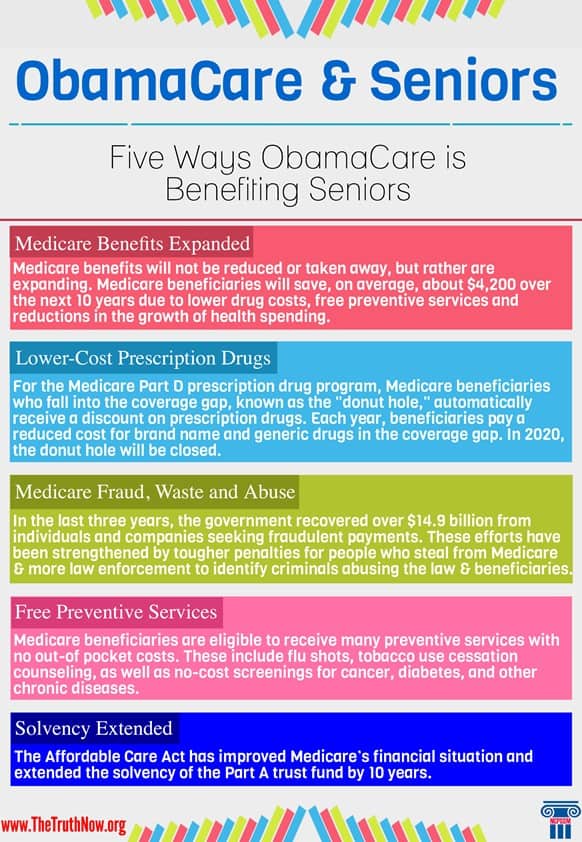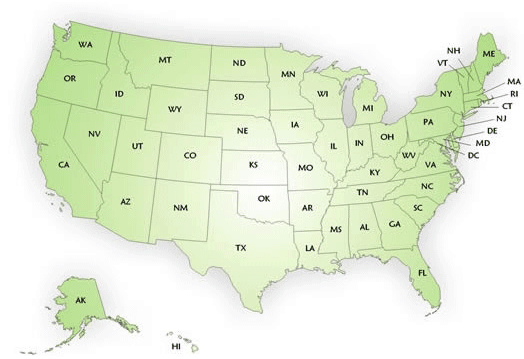Twisting the Truth About Medicare
 “How to Lie with Statistics” was a handy little guide that used to be required reading for journalism students and economics majors not so long ago. This book came to mind recently as we’ve followed the ongoing debate about the rate of doctors accepting or turning away Medicare patients. Columbia Journalism Review‘s, Trudy Lieberman, tackled the issue:
“How to Lie with Statistics” was a handy little guide that used to be required reading for journalism students and economics majors not so long ago. This book came to mind recently as we’ve followed the ongoing debate about the rate of doctors accepting or turning away Medicare patients. Columbia Journalism Review‘s, Trudy Lieberman, tackled the issue:
“The (Wall Street) Journal had reported that last year, according to the Centers for Medicare and Medicaid Services, 9,539 physicians opted out of Medicare, up from 3,700 in 2009. It noted an American Academy of Family Physicians survey that found the proportion of family physicians accepting new Medicare patients was 81 percent last year, down from 83 percent in 2010. Furthermore, the Journal reported, reimbursement rates weren’t the only issue: some doctors were dropping out of the system because Medicare is too intrusive in their practices. Mary Jane Minkin, a gynecologist at the Yale School of Medicine, quit when she saw patients’ gynecological records displayed on electronic records which made them available to other providers they consulted. ‘There’s no reason the dermatologist has to know about my patients’ libido issues,’ she told the paper.
Reasonably interesting stuff. But also somewhat incomplete, as Diamond (Dan Diamond of California Healthline) writes: ‘What the Journal didn’t report is that, per CMS, the number of physicians who agreed to accept Medicare patients continues to grow year-over-year, from 705,568 in 2012 to 735,041 in 2013. And other providers aren’t turning down Medicare, either. The number of nurse practitioners participating in the program has only gone up, Jan Towers of the American Academy of Nurse Practitioners told California Healthline.’
USA Today also reports, “More Doctors accepting Medicare patients”.
“The number of physicians accepting new Medicare patients rose by one-third between 2007 and 2011 and is now higher than the number of physicians accepting new private insurance patients, according to a Department of Health and Human Services report obtained by USA TODAY.
In 2007, about 925,000 doctors billed Medicare for their services. In 2011, that number had risen to 1.25 million, according to the report by the HHS Office of the Assistant Secretary for Planning and Evaluation.
‘I think the report comes at a time when people are asking questions about Medicare,’ said Jonathan Blum, principal deputy administrator for the Center for Medicare Services. ‘It provides a more complete picture of how physicians choose to participate in the Medicare system.’
“Ninety percent of office-based physicians accept new Medicare patients, a rate similar to those who take privately insured patients, researchers found. The rate of Medicare patients who say they can find a new doctor in a timely manner is similar to those who are privately insured, the report said.
Medpac found 28% of beneficiaries had a tough time finding a doctor who accepted Medicare last year, but Blum said that’s also similar to privately insured rates. “
Threatening that doctors will leave Medicare is an annual rallying cry from physicians forced to fight against hugely unacceptable rate decreases mandated by a flawed formula that Congress simply must fix. For seniors, keeping their doctors is vitally important. It’s unfortunate that they’ve become the pawns in the battle to fix the physicians payment formula – something we agree must happen.
Obamacare and Seniors
As President Obama continues his August push on the Affordable Care Act, Politico has an interesting look at the ACA compared to the passage of Medicare in 1965. There are a lot of similarities as the GOP fought hard against both:
President Barack Obama says he’s not worried that all the Obamacare fights will kill the law — because people fought the creation of Medicare and Social Security too, and now they’re more popular than ever.
Democrats have always wanted to believe Obamacare would follow the same pattern: Opponents tried to block passage of the new programs, but once they became law, the public saw the benefits and the opposition faded away.
But this time there’s a difference. Political opposition to Obamacare is still as strong as ever, more than three years after it was signed into law.
That means the administration’s task in launching the health care law — the biggest new social program since the creation of Medicare in 1965 — is harder than anything its predecessors had to face.
One problem with this analysis is that opposition isn’t as strong as ever. In fact, a GOP poll designed to give support to Republicans continuing to push for ACA repeal found the American people actually don’t support repeal:
“Americans — including 57 percent of independents in ten critical congressional districts — favor defunding Obamacare,” said Michael Needham, the CEO of Heritage Action. “House Republicans should be much more concerned with the fallout of failing to defund Obamacare than with the imaginary fallout of doing so.”
What Needham fails to mention, however, is that even this push poll that dramatically oversamples Republicans (more on that in a minute) finds respondents are more likely to say that the Affordable Care Act should be kept than scrapped — and that a plurality would blame Republicans if the government were to shut down.
Only 44.5 percent “oppose the health care law and think it should be repealed,” while 52 percent either support the law as is or have some concerns, but say they think implementation should move forward. And asked whom they would blame if “there was an impasse between president Obama and Congress on whether to continue to fund the health care law, and that impasse resulted in a partial government shutdown,” the top response (28 percent) was Republicans in Congress. The next option, Obama, got 21 percent of respondents.”
Seniors in Medicare have a lot at stake in this debate. Thanks to Obamacare, seniors will see an average savings of about $4,200 in their prescription drug costs over the next decade and the Part D coverage gap known as the “donut hole” will be closed. Seniors also receive free preventative visits and health screenings plus the Medicare trust fund has gained a decade of solvency.
These are real-life tangible benefits for millions of seniors they simply don’t want to lose. It’s no wonder the House GOP is feeling the wind dying down in their Obamacare propaganda campaign.



Celebrating Social Security’s Success on 78th Anniversary



“As we celebrate Social Security’s 78th birthday on August 14th, it’s important to remember the real-life impact America’s most successful program has on millions of Americans each year. Unfortunately, too many in Washington continue to view Social Security benefits as little more than a political bargaining chip in an austerity campaign targeting middle class families to reduce our deficits. The current economic crisis has shown us that future generations will need Social Security every bit as much as, if not more than, today’s retirees.
Only one-half of today’s work force has a retirement plan of any kind. Traditional pension plans have virtually disappeared for the recession generation and the homes many planned to use as a nest egg for retirement have plummeted in value. In spite of all this, Social Security has been a stable and secure source of income for millions who desperately need it. This economic recession has clearly demonstrated the billion dollar anti-Social Security lobby has, once again, gotten it completely backwards. We should be searching for ways to improve Social Security’s benefits not cut them. That’s why a proposal such as the chained CPI, which would cut Social Security now to help pay for failed policies of the past, is simply not an option for current or future retirees.”…Max Richtman, NCPSSM President/CEO
New State Snapshots Show America Can’t Afford to Lose Economic Benefits
Social Security’s economic impact reaches well beyond individual wallets to the ledgers of local businesses and merchants. Families spend $775 billion in Social Security benefits nationwide each year. When 57 million Americans use the purchasing power of those benefits, they are supporting local businesses and state economies with billions of dollars they simply wouldn’t have without Social Security. The National Committee to Preserve Social Security and Medicare has released state-by-state snapshots of how much revenue Social Security contributes to the economy of every Congressional District in each state and US territory. How much does your state and community stand to lose if Social Security benefits are cut? Check out NCPSSM’s Social Security Snapshots for the answer.
Social Security Begins Processing Claims to Same Sex Couples



“The recent Supreme Court decision on Section 3 of the Defense of Marriage Act, made just over a month ago, helps to ensure that all Americans are treated fairly and equally, with the dignity and respect they deserve.
We continue to work closely with the Department of Justice. In the coming weeks and months, we will develop and implement additional policy and processing instructions. We appreciate the public’s patience as we work through the legal issues to ensure that our policy is legally sound and clear.
I encourage individuals who believe they may be eligible for Social Security benefits to apply now, to protect against the loss of any potential benefits. We will process claims as soon as additional instructions become finalized.”
Buzzfeed details the limits of this announcement:
“The Social Security Administration is limiting payment of claims for same-sex married couples currently to those couples who were married in a state the allows same-sex couples to marry and are “domiciled,” or live, in a state that recognizes same-sex couples’ marriages.
The decision means claims from same-sex couples married where such couples can legally marry but who live in a state that does not recognize such marriages are having their applications put on hold for the time being.”
In our report, “Living Outside the Safety Net” we have urged Washington to change the law so that same sex couples who contribute to Social Security are no longer discriminated against. We have urged SSA to fully implement benefit changes, which come after the Supreme Court’s decision on the Defense of Marriage Age, to ensure that benefit discrimination ends.
Can Your State Afford to Lose Millions of Social Security Dollars?
While some in Washington claim America can’t afford programs like Social Security and Medicare, the truth is states simply can’t afford to lose the economic benefits these programs provide to every community in our nation. We’ve released state-by-state snapshots of how much revenue Social Security contributes to the economy of every Congressional District in each state and US territory.
Families spend $775 billion in Social Security benefits nationwide each year. When 57 million Americans use the purchasing power of those benefits, they are supporting local businesses and state economies with billions of dollars they simply wouldn’t have without Social Security. Unfortunately, this economic reality has been ignored by Washington’s well financed anti-Social Security lobby as it continues to try and convince Congress to cut middle-class benefits.
“You don’t have to be an economist to understand that cutting Social Security benefits, whether through the Chained CPI or other proposals, means less income for families — less money they can spend in their communities and less revenue for businesses coast-to-coast. Targeting families who rely on vital programs like Social Security ignores our real economic problems in favor of a political strategy to cut safety net programs. Members of Congress need to take a look at these state-by-state breakdowns and ask themselves, ‘Can my community afford to lose millions of dollars from our economy? Can my neighbors and families afford to lose the retirement and economic stability Social Security provides?’ Step outside Capitol Hill and the answer is a resounding ‘No.’ ”….Max Richtman, NCPSSM President/CEO
Check out your state’s stats here and the next time someone tell you we can’t afford Social Security, ask them — Can our economy really afford to lose it?
Twisting the Truth About Medicare



“The (Wall Street) Journal had reported that last year, according to the Centers for Medicare and Medicaid Services, 9,539 physicians opted out of Medicare, up from 3,700 in 2009. It noted an American Academy of Family Physicians survey that found the proportion of family physicians accepting new Medicare patients was 81 percent last year, down from 83 percent in 2010. Furthermore, the Journal reported, reimbursement rates weren’t the only issue: some doctors were dropping out of the system because Medicare is too intrusive in their practices. Mary Jane Minkin, a gynecologist at the Yale School of Medicine, quit when she saw patients’ gynecological records displayed on electronic records which made them available to other providers they consulted. ‘There’s no reason the dermatologist has to know about my patients’ libido issues,’ she told the paper.
Reasonably interesting stuff. But also somewhat incomplete, as Diamond (Dan Diamond of California Healthline) writes: ‘What the Journal didn’t report is that, per CMS, the number of physicians who agreed to accept Medicare patients continues to grow year-over-year, from 705,568 in 2012 to 735,041 in 2013. And other providers aren’t turning down Medicare, either. The number of nurse practitioners participating in the program has only gone up, Jan Towers of the American Academy of Nurse Practitioners told California Healthline.’
USA Today also reports, “More Doctors accepting Medicare patients”.
“The number of physicians accepting new Medicare patients rose by one-third between 2007 and 2011 and is now higher than the number of physicians accepting new private insurance patients, according to a Department of Health and Human Services report obtained by USA TODAY.
In 2007, about 925,000 doctors billed Medicare for their services. In 2011, that number had risen to 1.25 million, according to the report by the HHS Office of the Assistant Secretary for Planning and Evaluation.
‘I think the report comes at a time when people are asking questions about Medicare,’ said Jonathan Blum, principal deputy administrator for the Center for Medicare Services. ‘It provides a more complete picture of how physicians choose to participate in the Medicare system.’
“Ninety percent of office-based physicians accept new Medicare patients, a rate similar to those who take privately insured patients, researchers found. The rate of Medicare patients who say they can find a new doctor in a timely manner is similar to those who are privately insured, the report said.
Medpac found 28% of beneficiaries had a tough time finding a doctor who accepted Medicare last year, but Blum said that’s also similar to privately insured rates. “
Threatening that doctors will leave Medicare is an annual rallying cry from physicians forced to fight against hugely unacceptable rate decreases mandated by a flawed formula that Congress simply must fix. For seniors, keeping their doctors is vitally important. It’s unfortunate that they’ve become the pawns in the battle to fix the physicians payment formula – something we agree must happen.
Obamacare and Seniors
As President Obama continues his August push on the Affordable Care Act, Politico has an interesting look at the ACA compared to the passage of Medicare in 1965. There are a lot of similarities as the GOP fought hard against both:
President Barack Obama says he’s not worried that all the Obamacare fights will kill the law — because people fought the creation of Medicare and Social Security too, and now they’re more popular than ever.
Democrats have always wanted to believe Obamacare would follow the same pattern: Opponents tried to block passage of the new programs, but once they became law, the public saw the benefits and the opposition faded away.
But this time there’s a difference. Political opposition to Obamacare is still as strong as ever, more than three years after it was signed into law.
That means the administration’s task in launching the health care law — the biggest new social program since the creation of Medicare in 1965 — is harder than anything its predecessors had to face.
One problem with this analysis is that opposition isn’t as strong as ever. In fact, a GOP poll designed to give support to Republicans continuing to push for ACA repeal found the American people actually don’t support repeal:
“Americans — including 57 percent of independents in ten critical congressional districts — favor defunding Obamacare,” said Michael Needham, the CEO of Heritage Action. “House Republicans should be much more concerned with the fallout of failing to defund Obamacare than with the imaginary fallout of doing so.”
What Needham fails to mention, however, is that even this push poll that dramatically oversamples Republicans (more on that in a minute) finds respondents are more likely to say that the Affordable Care Act should be kept than scrapped — and that a plurality would blame Republicans if the government were to shut down.
Only 44.5 percent “oppose the health care law and think it should be repealed,” while 52 percent either support the law as is or have some concerns, but say they think implementation should move forward. And asked whom they would blame if “there was an impasse between president Obama and Congress on whether to continue to fund the health care law, and that impasse resulted in a partial government shutdown,” the top response (28 percent) was Republicans in Congress. The next option, Obama, got 21 percent of respondents.”
Seniors in Medicare have a lot at stake in this debate. Thanks to Obamacare, seniors will see an average savings of about $4,200 in their prescription drug costs over the next decade and the Part D coverage gap known as the “donut hole” will be closed. Seniors also receive free preventative visits and health screenings plus the Medicare trust fund has gained a decade of solvency.
These are real-life tangible benefits for millions of seniors they simply don’t want to lose. It’s no wonder the House GOP is feeling the wind dying down in their Obamacare propaganda campaign.



Celebrating Social Security’s Success on 78th Anniversary



“As we celebrate Social Security’s 78th birthday on August 14th, it’s important to remember the real-life impact America’s most successful program has on millions of Americans each year. Unfortunately, too many in Washington continue to view Social Security benefits as little more than a political bargaining chip in an austerity campaign targeting middle class families to reduce our deficits. The current economic crisis has shown us that future generations will need Social Security every bit as much as, if not more than, today’s retirees.
Only one-half of today’s work force has a retirement plan of any kind. Traditional pension plans have virtually disappeared for the recession generation and the homes many planned to use as a nest egg for retirement have plummeted in value. In spite of all this, Social Security has been a stable and secure source of income for millions who desperately need it. This economic recession has clearly demonstrated the billion dollar anti-Social Security lobby has, once again, gotten it completely backwards. We should be searching for ways to improve Social Security’s benefits not cut them. That’s why a proposal such as the chained CPI, which would cut Social Security now to help pay for failed policies of the past, is simply not an option for current or future retirees.”…Max Richtman, NCPSSM President/CEO
New State Snapshots Show America Can’t Afford to Lose Economic Benefits
Social Security’s economic impact reaches well beyond individual wallets to the ledgers of local businesses and merchants. Families spend $775 billion in Social Security benefits nationwide each year. When 57 million Americans use the purchasing power of those benefits, they are supporting local businesses and state economies with billions of dollars they simply wouldn’t have without Social Security. The National Committee to Preserve Social Security and Medicare has released state-by-state snapshots of how much revenue Social Security contributes to the economy of every Congressional District in each state and US territory. How much does your state and community stand to lose if Social Security benefits are cut? Check out NCPSSM’s Social Security Snapshots for the answer.
Social Security Begins Processing Claims to Same Sex Couples



“The recent Supreme Court decision on Section 3 of the Defense of Marriage Act, made just over a month ago, helps to ensure that all Americans are treated fairly and equally, with the dignity and respect they deserve.
We continue to work closely with the Department of Justice. In the coming weeks and months, we will develop and implement additional policy and processing instructions. We appreciate the public’s patience as we work through the legal issues to ensure that our policy is legally sound and clear.
I encourage individuals who believe they may be eligible for Social Security benefits to apply now, to protect against the loss of any potential benefits. We will process claims as soon as additional instructions become finalized.”
Buzzfeed details the limits of this announcement:
“The Social Security Administration is limiting payment of claims for same-sex married couples currently to those couples who were married in a state the allows same-sex couples to marry and are “domiciled,” or live, in a state that recognizes same-sex couples’ marriages.
The decision means claims from same-sex couples married where such couples can legally marry but who live in a state that does not recognize such marriages are having their applications put on hold for the time being.”
In our report, “Living Outside the Safety Net” we have urged Washington to change the law so that same sex couples who contribute to Social Security are no longer discriminated against. We have urged SSA to fully implement benefit changes, which come after the Supreme Court’s decision on the Defense of Marriage Age, to ensure that benefit discrimination ends.
Can Your State Afford to Lose Millions of Social Security Dollars?
While some in Washington claim America can’t afford programs like Social Security and Medicare, the truth is states simply can’t afford to lose the economic benefits these programs provide to every community in our nation. We’ve released state-by-state snapshots of how much revenue Social Security contributes to the economy of every Congressional District in each state and US territory.
Families spend $775 billion in Social Security benefits nationwide each year. When 57 million Americans use the purchasing power of those benefits, they are supporting local businesses and state economies with billions of dollars they simply wouldn’t have without Social Security. Unfortunately, this economic reality has been ignored by Washington’s well financed anti-Social Security lobby as it continues to try and convince Congress to cut middle-class benefits.
“You don’t have to be an economist to understand that cutting Social Security benefits, whether through the Chained CPI or other proposals, means less income for families — less money they can spend in their communities and less revenue for businesses coast-to-coast. Targeting families who rely on vital programs like Social Security ignores our real economic problems in favor of a political strategy to cut safety net programs. Members of Congress need to take a look at these state-by-state breakdowns and ask themselves, ‘Can my community afford to lose millions of dollars from our economy? Can my neighbors and families afford to lose the retirement and economic stability Social Security provides?’ Step outside Capitol Hill and the answer is a resounding ‘No.’ ”….Max Richtman, NCPSSM President/CEO
Check out your state’s stats here and the next time someone tell you we can’t afford Social Security, ask them — Can our economy really afford to lose it?




